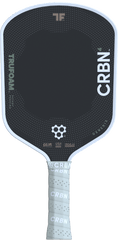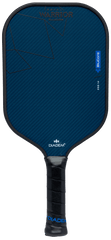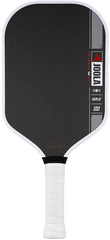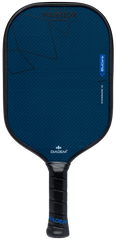Ready to take your pickleball game to the next level? This article lays out essential strategies that can help you outsmart your opponents and rule the court.
You’ll learn everything from mastering the art of the dink shot to effective communication with your partner. These tactics are tailored to boost your skills and keep you ahead of the competition.
We’ll also highlight common mistakes you should avoid and share tips for consistent improvement.
Whether you’re just starting out or looking to polish your technique, this guide has something for everyone. Dive in and get ready to transform your gameplay!
What are the Strategies for Playing Pickleball?
Playing pickleball effectively means you need to grasp various strategies that can really boost your performance on the court. Whether you’re playing singles or doubles, having a solid game plan is crucial.
Your strategies will cover everything from shot selection to communication with your partner, all of which play a big role in winning games and outsmarting your opponents. By mastering these strategies, you'll be able to adapt to different match situations and make your overall pickleball experience that much more enjoyable.
1. Master the Dink Shot
The dink shot is a game-changer in pickleball, and when you nail it, you can really alter the flow of the game. It’s that soft shot aimed just over the net that puts pressure on your opponents, forcing them to make mistakes and giving you and your partner a chance to shine. Mastering the dink isn’t just about precision; it’s also about having a good sense of the game. Being aware of your opponent’s movements lets you respond effectively during rallies.
If you want to take your performance up a notch, knowing how to place this shot effectively is key. By capitalizing on your opponent's weaknesses—like their positioning or footwork—you can aim your dink at the most vulnerable spots on the court.
Practicing the dink shot involves some targeted drills that focus on placement and consistency. Teaming up with a partner to create game-like scenarios can really help. Plus, adding different angles and spins keeps your opponents guessing and makes you less predictable on the court. Training yourself to recognize those perfect moments to deploy the dink can really shift the momentum of a match in your favor.
2. Utilize the Lob Shot
The lob shot is a must-have in your pickleball toolkit, perfect for changing the game’s tempo and giving you a solid edge on the court. When you nail a well-timed lob, you can push your opponents back, throwing a wrench in their strategy and opening up opportunities for your shots. Knowing when to use the lob is key; it’s all about reading your opponents and adjusting your game as things unfold.
When your opponents are charging the net, a perfectly placed lob can really do the trick, forcing them to back off and rethink their positioning. This tactic helps neutralize their advantage and gives you the space you need to make your move.
By adding the lob shot to your game, you can create some exciting exchanges and shift the momentum in your favor. When you practice this technique, focus on getting the right height and angle; aim for those back corners to maximize coverage and keep your opponents guessing. Team up with a partner for drills to boost your consistency and develop that sharp sense of timing that will take your overall gameplay to the next level.
3. Use the Third Shot Drop
The third shot drop is a game-changing strategy in pickleball that can really set the tone for your entire rally. After the serve and return, when you nail this shot, it helps you transition from the baseline to the net, giving you a great court position while keeping your opponents on their toes.
Choosing the right shot is crucial here; a well-placed third shot drop can control the pace of the match and force your opponents into making mistakes.
To make the most of your third shot drop, focus on your positioning as you approach the net—balance is key. When practicing this shot, remember to use a soft touch, maintain a stable grip, and keep an eye on how your opponents react.
It's important to tweak your shot placement based on their responses; if they seem ready for your drop shot, mix it up with a drive instead. Mastering this technique not only sharpens your strategic play but also keeps your opponents guessing, making the match even more exciting.
4. Play to Your Opponent's Weaknesses
Identifying and exploiting your opponent's weaknesses is key to becoming a successful pickleball player. By observing their playing style and shot techniques, you can tweak your strategy to target their vulnerabilities. Whether it’s varying your shot placement or completely changing your game plan, this level of game intelligence boosts your chances of winning and makes you more adaptable on the court.
To effectively analyze your opponents during matches, you can use various methods, like keeping an eye on their footwork and reaction times. If you notice that an opponent struggles with low shots, strategically placing the ball at their feet can really throw them off their game.
Finding the right balance between offense and defense is crucial; knowing when to be aggressive or when to play it safe can significantly impact the match's outcome. Mixing up your pace or throwing in some unexpected spins can keep your opponent guessing and off-balance.
Ultimately, developing sharp situational awareness gives you a tactical edge, making your gameplay proactive rather than just reactive.
5. Communicate with Your Partner
Effective communication with your partner is key to crushing it in doubles pickleball. When you communicate clearly and concisely, you boost your teamwork and make sure both of you are on the same wavelength about strategies, court coverage, and shot selection.
By establishing roles and using signals during the game, you not only enhance your performance but also build resilience against your opponents' tactics.
In this fast-paced sport, you should use various communication techniques, like verbal cues and hand signals, to share your intentions seamlessly. For example, calling out specific strategies like ‘switch’ or ‘mine’ helps clarify roles and positions, cutting down on confusion and speeding up decision-making. Hand signals, like pointing to target areas on the court, can guide your teammate without tipping off the opponents.
This synchronized communication creates an atmosphere of trust and cooperation, allowing you both to execute your game plan with ease. Keep in mind that mastering these techniques will not only boost your individual game but also strengthen your partnership, leading to a more cohesive and successful performance on the court.
How to Improve Your Pickleball Game?
Improving your pickleball game takes dedication, consistent practice, and a focus on a few key areas, like footwork and mental resilience.
By incorporating targeted drills and analyzing your performance, you can boost your skills, sharpen your game intelligence, and cultivate a winning mindset that encourages growth and adaptability.
Whether you’re playing singles or doubles, committing to improvement will really make a difference in your overall performance.
1. Practice Consistently
Consistent practice is the key to improving your pickleball skills and taking your game to the next level. When you stick to a structured practice routine, you’re not just honing your technical abilities; you’re also developing the strategies that are crucial for success.
Incorporating specific drills like baseline rallies, volley exercises, and serve-and-return patterns can really boost your agility and responsiveness. As you focus on these targeted practices, you’ll notice a significant impact during actual matches, helping you outmaneuver your opponents and seize scoring opportunities.
By prioritizing regular practice, you can confidently bring your skills from training into those high-stakes game situations, ultimately elevating your competitive play.
2. Focus on Footwork
Footwork is a fundamental piece of the pickleball puzzle that can seriously boost your performance and help you cover the court like a pro. When you work on your footwork techniques, you're not just improving your positioning; you're also enhancing your ability to respond to your opponent's shots with agility and precision. Practicing different footwork drills can make a big difference in your game by helping you maintain the right tempo and manage your energy during matches.
When you execute your footwork well, you can move quickly and efficiently toward the ball, making sure you’re ready for every shot while keeping your balance intact. Techniques like lateral shuffles, quick steps, and pivoting are key for navigating the court strategically. Simple drills like the ladder drill can amp up your agility, while side-to-side shuffles will sharpen your lateral movement.
By adding these exercises to your training routine, you’ll refine your movement patterns and build muscle memory, which will boost your confidence when you’re out there competing. Focusing on your footwork allows you to create better angles and seize opportunities to take control of the game.
3. Work on Your Serve
Developing a reliable and effective serve is crucial for setting the right tone at the beginning of each point in pickleball. When you understand different serve types and master those shot techniques, you gain a strategic edge over your opponents, making it tough for them to return the ball. Regularly practicing your serve can seriously boost your overall game and amp up your confidence on the court.
When you get comfortable with serve types like the drive, lob, and slice, you can keep your rivals guessing, which often makes them hesitate and retreat. Each serve requires a unique technique—power, placement, and spin are all key players in the execution. As the match unfolds, tweaking your serve strategies based on your opponent’s weaknesses can really shift the momentum in your favor.
To sharpen these skills, try incorporating specialized practice routines that focus on precision and consistency. This will help create meaningful drills that mimic real game scenarios. Don’t forget to work on your return strategy too; by doing so, you’ll be better prepared to anticipate and counter those challenging serves, building a well-rounded skill set that takes your performance to the next level.
4. Study Your Opponents
Studying your opponents is a crucial part of crafting effective match strategies in pickleball. By taking a close look at their playing styles, shot selections, and weaknesses, you can tailor your approach to boost your chances of winning. Doing a thorough match analysis not only gets you ready for future encounters but also sharpens your adaptability and decision-making skills when the game gets intense.
Observing your opponents during both practice and actual matches can give you some valuable insights into their patterns and tendencies. Make sure to take notes on how they react under pressure, their favorite shots, and where they like to position themselves on the court. This info is vital for creating tactics that can exploit their vulnerabilities.
Reviewing video footage of their previous games can help you spot recurring behaviors or strategies you can counter effectively. By immersing yourself in the details of their gameplay, you’ll be better prepared to come up with a strategy that plays to your strengths while minimizing the impact of your competitor's game.
What are Common Mistakes to Avoid in Pickleball?
Avoiding common mistakes in pickleball is key to improving your overall gameplay and getting consistent results on the court. It’s easy for players at any skill level to fall into traps that can mess with their performance—things like poor shot selection, ineffective communication, or misjudging court positioning.
By taking the time to learn about these pitfalls and figuring out how to dodge them, you’ll set yourself up for a more successful and enjoyable experience when you hit the court to compete.
1. Hitting the Ball Too Hard
One of the biggest mistakes you can make in pickleball is hitting the ball too hard without really thinking about shot selection and placement. Sure, power can be great, but going all out often leads to losing control, which means more errors and missed chances. It’s all about knowing when to go for power and when to focus on precision if you want to master your game and stay one step ahead of your opponents.
A powerful shot might sound impressive, but it can actually mess with your ability to place the ball effectively. When you focus only on hitting hard, you often sacrifice accuracy, leaving wide-open opportunities for your opponents to jump on.
To up your game, try refining your shot selection by mixing in a variety of techniques like:
- soft dinks
- strategic drops
- well-timed volleys
Practicing these can help you gain better control and precision, leading to smarter plays overall. Plus, developing the ability to read the game and anticipate what your opponents are up to will help you make better decisions, ensuring your focus is on tactics rather than just brute force.
2. Standing Too Far Back
Standing too far back on the court can really mess with your ability to control the game and pull off those effective shots during play. Proper court positioning is key for getting into net play and maximizing your shot effectiveness because it lets you react quickly to your opponents' movements.
Finding the right balance in your positioning will not only enhance your overall gameplay but also help you adopt a more strategic approach.
Optimizing your court positioning is essential, whether you lean toward an aggressive or defensive style. If you're great at net play, getting in closer to the net can give you plenty of chances to volley and intercept shots, which means more control over the rally. On the flip side, if you're a defensive player, hanging back a bit can give you the time you need to read incoming shots effectively.
To improve your positioning, work on footwork drills to boost your agility and help you move quicker across the court. Also, take some time to study your opponent’s shot patterns; this can really help you make strategic adjustments to your positioning, leading to more effective shot execution when it counts most in a match.
3. Not Moving as a Team
In doubles pickleball, if you and your partner aren’t moving as a cohesive unit, it can really hurt your team’s effectiveness on the court. Teamwork and communication are key to making sure you both cover the court well and support each other during those intense rallies.
When you exchange information smoothly, you can anticipate each other’s movements and make those split-second decisions that can turn the tide of the game. For example, using clear verbal signals like calling out "mine" or "yours" helps clear up any confusion about who’s going for a shot, making things run a lot more efficiently.
Positioning tactics, like keeping a staggered formation, can prevent you from stepping on each other’s toes and ensure that both of you are ready to respond to different angles of attack. And don’t forget about non-verbal cues! Simple eye contact and gestures can really enhance your team dynamics, leading to better synchronization and a stronger presence on the court.
4. Not Adjusting to Different Courts
Each pickleball court you step onto has its own set of challenges and conditions, so it's essential to tweak your strategies accordingly. Whether the court has a different surface or size, not adjusting to these variations can really put a damper on your performance and game plan. Being aware of these factors and staying flexible in your approach is key to navigating competitive play successfully.
For example, you might notice that a smooth, indoor court lets the ball zip around much faster than a gritty outdoor surface, where you have to deal with the wind. In situations like this, modifying your strategy to adopt a more aggressive volleying technique could lead to better results.
It's also super important to quickly read the court conditions; doing so can significantly boost your game awareness. You should practice observing how the ball reacts on different surfaces and adjust your positioning accordingly to maintain an edge over your opponents. By making it a habit to constantly evaluate and adapt your strategies, you’ll refine your approach and elevate your overall performance on any court.
Frequently Asked Questions
What is pickleball and why is it important to have strategies to win games?
Pickleball is a popular racquet sport that combines elements of tennis, badminton, and table tennis. Having effective strategies is crucial in order to outsmart your opponents and win games.
What are some basic pickleball strategies for beginners?
Some basic strategies for beginners include staying in the middle of the court, hitting to the opponent's weaker side, and communicating with your partner.
How can I improve my pickleball strategies?
To improve your pickleball strategies, practice different shots such as lobs, dinks, and volleys. Additionally, watch and learn from experienced players and attend clinics or lessons to learn advanced strategies.
What are some common mistakes to avoid when playing pickleball?
Some common mistakes to avoid include not moving your feet, standing too far back from the net, and hitting the ball too hard. It's also important to communicate with your partner and not try to do too much on your own.
How can I adapt my strategies for different opponents?
To adapt your strategies for different opponents, pay attention to their strengths and weaknesses. For example, if they have a strong backhand, try to hit to their forehand more. Also, be aware of their positioning and adjust your shots accordingly.
What should I do if my opponent is consistently winning points?
If your opponent is consistently winning points, try to mix up your shots and strategies. This can throw them off and give you an advantage. Also, focus on your own game and don't let their success affect your confidence.










